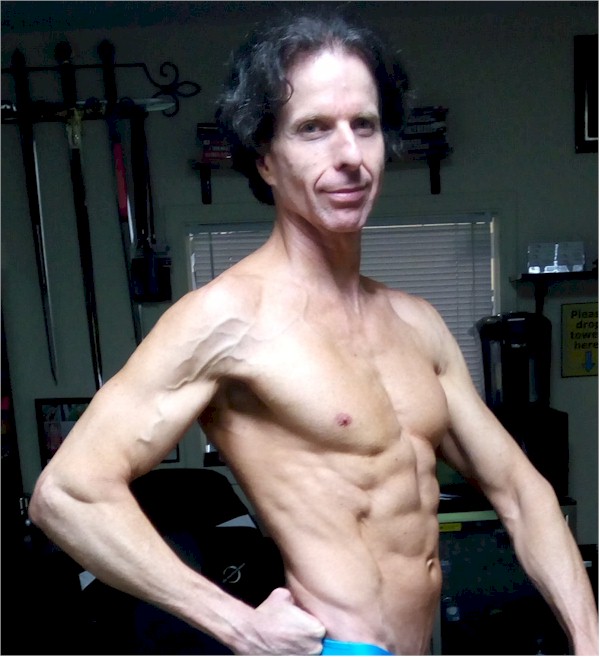1. Good News2. Product Highlight
3. Brainpower tip
| ||||||||||||||||||||||||||||||||
|
Hillary's defeat does not mean the end of stealing. But with a new
administration, there is some hope for relief from the massive stealing done via
inflation and our many other taxes. The vast majority of what's stolen from
people like you and me goes to the ultra-rich. Contact your Congressman about the new budget and advocate for stringent waste reduction along with a huge cut in what the government wastes on the so-called "defense" department. The USA spends more on its military than all other nations combined spend on theirs--this is unaffordable insanity by any definition. That budget can be cut by hundreds of billions of dollars with no diminution whatsoever of national security. In fact, making this budget sensible would actually increase national security. Why? Because of the hunger problem that is making most of an entire generation incurably stupid. The military can't run on stupid. The hunger problem is a result of the massive federal spending; this is economics 101. And anyway, where was our military when our Constitution and economy were under severe attack by Barry Soetoro and his gang? They sure weren't defending our country. I'm not sure we wanted a military coup, but after 8 years of unprecedented damage our hindsight shows us we'd be far better off today if there had been one. Ever deal with a federal agency? Forms, forms, and more forms. A complete waste. Eliminate this stupidity and you vastly reduce not only compliance costs but also the fake "need" for useless employees to play games with all those stupid forms. The typical federal agency can be reduced by 80% and still accomplish its purported mission, just by aligning its processes with sanity and logic. Let us hope the new President can restore civil law and order. And do a yeoman's job of easing our horrific financial burden that Soetoro has so vastly increased. He can't do it without Congress on his side. So write to the corporate employee who pretends to represent you and declare the need to end agency bloat and other waste. |
5. Security tip
|
Security experts advise not putting Christmas present boxes out by the curb
on trash day. They are correct; IRS goons patrol the streets just looking for juicy targets they can rob and terrorize. Let them do that to the libtard down the street, rather than to you and your family. |
6. Health tip/Fitness tips
|
Do you know the difference between exercising and training? It's
a huge difference. And an important one. Those who don't know may make assumptions like the following:
When I've visited people out of town and they don't train with weights, they cannot fathom why I must (not want to) go to a gym even if I have to pay a daypass fee. "Can't you miss it just this once?" or "Why don't we just go for a walk instead?" are common offerings to the "problem" that I've posed. They are also under the misconception it's going to take me half a day, instead of 30 minutes plus travel there and back. Despite my excitement, they almost never want to go with me and see what it's really about. Those who confuse training with exercising often believe you're just burning some calories and getting some blood flow. Yoga, stretching, walking, jogging, and other low-intensity activities do this but they do not stimulate the hormonal system to raise testosterone and they do not stimulate the body to build new muscle. Training is all about getting the adaptive response. Merely exercising will never even come close to producing a body that looks like mine (or looks like any of several other looks that can be achieved only through adaptive response training). To get the body to respond adaptively, you must subject some part of it to a very high level of stress. Bodybuilders follow certain principles, such as:
We apply these principles to specific muscle groups or body parts in a series of "split routines" rather than trying to hit all our muscles on the same day.
|
|
|
Top photo taken 16SEP2016, just days before 56th birthday; bottom photo taken 3 days after 56th birthday | |
|
So for example, if I work back and biceps today it will be several days (of rest for them) until I hit them again. But I'll work chest and triceps on my next upper body day (I have these laid out as Tues, Wed, Sat, Sun) and then shoulders on the next one after that, and then I'll do back and biceps again. I train calves every other Monday and do squats on the Mondays I don't do calves. I work abs every Friday (hanging leg raises and Roman chair). None of these workouts takes a long time, because there's only so much you need to do (and can do) to stimulate that adaptive response. But stimulating it is very taxing for the muscle group(s) being trained that day. That's why if we bodybuilders work chest on, say, Wednesday, it won't get worked again until the following week. Those pectorals and supporting muscles, not to mention the tendons and ligaments involved, need that long of a rest period. Another thing that happens when using the split routine, high-intensity approach is this. Each isolation exercise day (e.g., a day for working back and biceps but not chest and triceps, and making sure you don't cheat on form to recruit any non-target muscles) is you get a testosterone spike for each workout. Merely exercising will produce cortisol and depress testosterone, and this has been verified ad nauseum through testing. So by training this way I get a testosterone spike every day (also a spike in HGH). That's what every other bodybuilder does, also. It's why we have that ripped look and why we have (to varying degrees) muscle hypertrophy that makes us look so different from those who do not bodybuild. Testosterone is doing the work, here. But we have to get the body to step up production of testosterone, and we have to do that frequently. As in five or six days a week. It's like going to the doctor five or six days a week to get a testosterone shot, except you're not paying for a shot, nobody's sticking you with a needle, and you aren't damaging your endocrine system. So you don't develop early onset osteoporosis the way "normal" people do, you stay leaner, and you stay stronger. Why would anyone want to give this up? I really have no idea. The idea that I can just bump one day's workout into another day's workout and do them on the same day doesn't work. This idea is also usually based on the assumption that all weight training is the same, with no clue that each workout serves a very specific purpose and trains (severely damages) only specific muscles. You don't skip 30 minutes one day and then do 60 minutes the next day. This sacrifices that day of T spike the first time, then on the "make-up" day overtrains so that cortisol rises and T drops. Each training session is exhausting for me, because it is high-intensity and it does a lot of cellular damage. I've burst a huge number of muscle cells and am generally feeling weak; it takes a few hours to feel peppy again. Those muscles are usually sore for several days, as they are repaired and get stronger. This is what weight training does, those cells die and the adaptive response replaces them while also adding new ones and/or making existing ones bigger. The trick is to get sufficient rest and good nutrition; these help keep the rebuilding process ahead of the destruction process. Overload your body so that the rebuilding process can't catch up, and you just get behind. Because I have a rest day in each week, I can move workouts a little bit. But only a little bit. There is a difference between flexibility and lack of discipline. I can also vary when I train in a given day. I personally like to train in the morning, but if there's travel I can pick any other time of the day to train; after all, those muscles will have several days to rest up so morning versus evening isn't really a factor. To get time under tension and progressive overload, I need weights. It is possible to accomplish this with body weight exercises, isometrics, and a few other techniques but these are not optimal methods. That's why, for example, all professional football and basketball teams train with weights rather than using other methods. Even if you do use body weight, you are (for back work) going to need a chinning bar and few people have one in their home. If you're lucky, you may find a good substitute however. Sometimes, I have improvised by doing things such as using heavy objects my host has in their garage or using my full suitcase for weight. This works, but I have found that the shapes of these objects makes it difficult or impossible to get the "squeeze" I need and can easily get from a dumbbell. The result is my workout is more exercise than training, something I can live with but do not prefer. Exercising produces some moderate benefits, but have you noticed that very few people exercise on a regular, scheduled basis? What's their motivation to do so? They aren't seeing any spectacular results. By contrast, your typical body builder is highly motivated to train on a regular, scheduled basis. I'm so motivated that I have not missed a workout in over 39 years. I'll gladly skip the exercising to ensure there's time for my training. | |
|
| |
At
www.supplecity.com, you'll find plenty of informative, authoritative
articles on maintaining a lean, strong physique. It has nothing to
do with long workouts or impossible to maintain diets. In fact:
| |
7. Factoid
|
Donald Trump's IQ is about 60 points higher than that of Barry Soetoro (aka, Obama). (Estimation based on academic records and other indicators. Soetoro's records are sealed and that includes records of any IQ test he may have taken). |
8. Thought for the Day
|
People often use words without understanding their meaning. What they are saying and what you are hearing might not agree. |
Please forward this eNL to others.
Authorship
The views expressed in this e-newsletter are generally not shared by criminals, zombies, or brainwashed individuals.Except where noted, this e-newsletter is entirely the work of Mark Lamendola. Anything presented as fact can be independently verified. Often, sources are given; but where not given, they are readily available to anyone who makes the effort.
Mark provides information from either research or his own areas of established expertise. Sometimes, what appears to be a personal opinion is the only possibility when applying sound logic--reason it out before judging! (That said, some personal opinions do appear on occasion).
The purpose of this publication is to inform and empower its readers (and save you money!).
Personal note from Mark: I value each and every one of you, and I hope that shows in the diligent effort I put into writing this e-newsletter. Thank you for being a faithful reader. Please pass this newsletter along to others.


